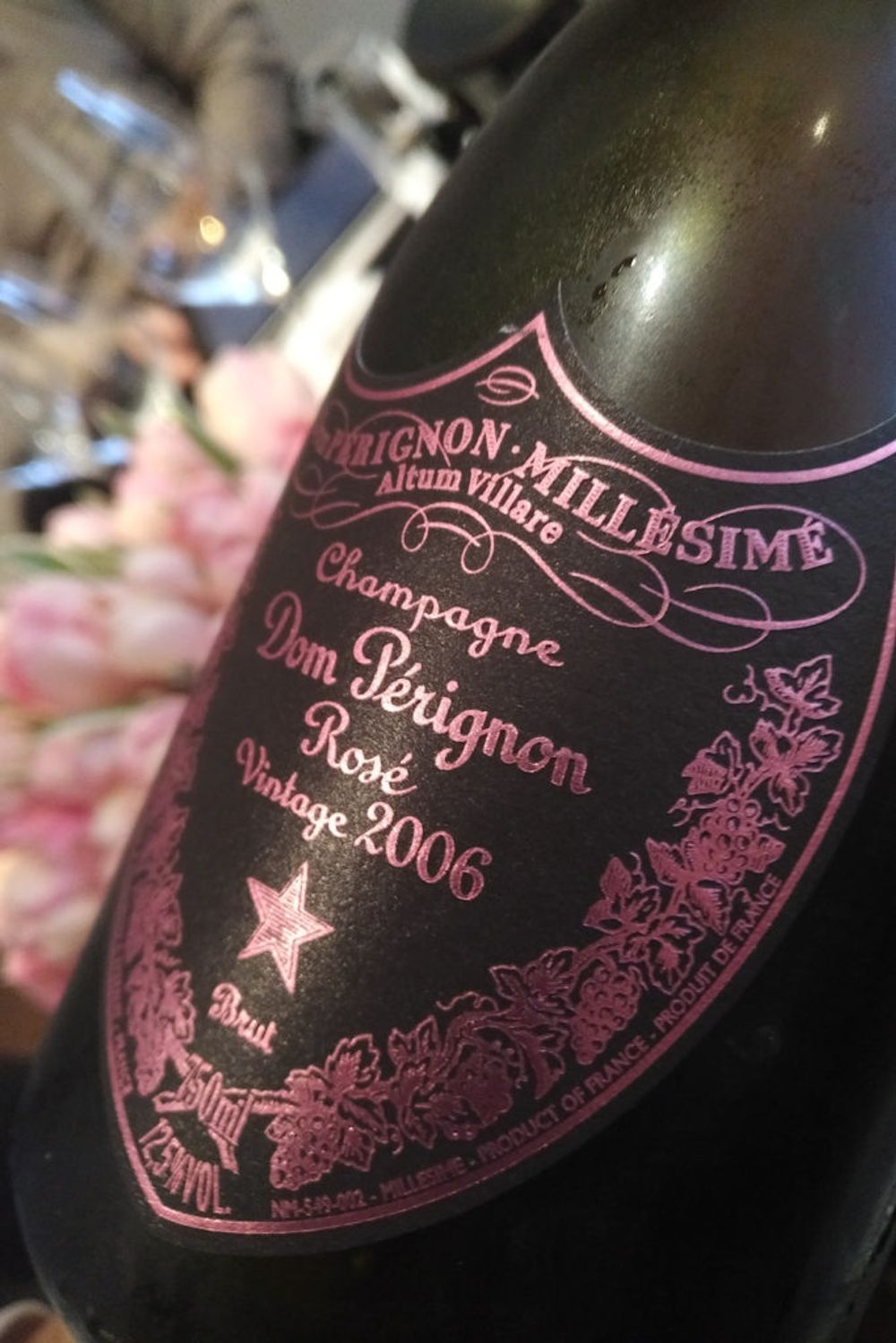This is the first time in the history of Dom Pérignon Rosé, which started with the 1959 vintage, that five consecutive vintages, i.e. 2002, 2003, 2004, 2005, 2006 have been released.
Vincent Chaperon, chef-de-cave at Dom Pérignon, was in London yesterday to launch the 2006 vintage of Dom Pérignon Rosé. The rose-gold hued wine was poured alongside the Dom Pérignon Rosé vintages of 2003, 2004 and 2005 in order to “contextualise” the new release and to illustrate “what comes from the Dom Pérignon aesthetic and what comes from the vintage.”

Vincent Chaperon, chef de cave, London February 28, 2019
Chaperon of course noted the “incredible sequence of vintages”. This is the first time in the history of Dom Pérignon Rosé, which started with the 1959 vintage, that five consecutive vintages, i.e. 2002, 2003, 2004, 2005, 2006 were released.
Very deliberately Chaperon talked about vision and the ideas that shape this iconic brand. Technical detail, it seemed, was less important, even though fully expanded on when prompted. However, the message is clear: while technical perfection is a given, what matters most is projecting the lifestyle values of Dom Pérignon: “Dom Pérignon looks for emotion. Emotion is memory and we believe we can reach that at Dom Pérignon with harmony,” Chaperon said. “We believe that harmony is universal. It’s a notion everybody understands. We try to embody harmony via our vision of Dom Pérignon.” This harmony, in turn, “stands in tension with the experience of the year.”
It is this vision of the finished Champagne that guides every single one of the myriad decisions made in vineyard and cellar. Chaperon refers to this as “organising diversity” – the diversity of vineyard plots, of grape varieties, of base wines. “Dom Pérignon is the sum of all these decisions,” he declared. Each released vintage then stands “to testify what that year was.”

Chaperon explained that 2006 had been “consistently warm throughout the vegetative period, the only exception to this was a cool and moist August. But the sun came back in September and we had four weeks of beautiful weather.” While this gave an “embracing, creamy, unctuous texture” to Dom Pérignon Blanc, it gives “structure” to the Rosé. “There is this enveloping texture but on the mid-palate the structure is looming.” For the 2006 Rosé, Chaperon said, his two guiding terms are “Impulsion” and “Magnetism”: the wine is “driving you into a dark and profound direction.”
The Dom Pérignon Rosé handwriting is clear: these are generous, rounded, rich wines that really put the body and power of Pinot Noir centre stage. These wines are about texture and mellowness – and to an extent even about a theme of pleasant bitterness. Right now this stunning quartet revealed vintage variation through that Pinot prism and different stages of development. 2006 takes its natural place in a line-up that will get ever more complex with age. A treat.

Dom Pérignon Rosé 2006
Rose gold, coppery, deep hue. With air, the initially creamy, rich nose gives way to notions of soft, freshly-baked rye crumb and dried blood orange peel. The palate opens with a certain juiciness and fills the senses with its fine mousse. Then there is a spicy saltiness, reminiscent of maple syrup, alongside a very pleasantly bitter edge. It is this, rather than acidity, that counters the richness which is like a picture of salted, toasted caramel biscuit. A gentle freshness persists along with that spice.
Disgorged in early 2018, the Dom Pérignon Rosé 2006 is a blend of 56% Pinot Noir and 44% Chardonnay. The red wine portion was somewhere between 20-24%. All base wines went through malo-lactic fermentation. Dosage is 6g/l.









































